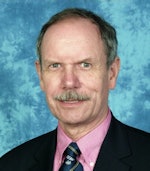
As SNM convenes its annual meeting on June 5, the society faces a number of challenges, including a persistent shortage of a key radioisotope, looming new regulatory guidelines on PET radiopharmaceutical production, and the need to continually demonstrate nuclear medicine's value.
Current SNM president Michael Graham, M.D., Ph.D., tackled many of these issues when he took the reins of the Reston, VA, society at last year's SNM annual meeting in Toronto. Graham, director of nuclear medicine at the University of Iowa in Iowa City, became SNM president less than one month after Atomic Energy of Canada's (AECL) National Research Universal reactor in Chalk River, Ontario, went offline, suspending molybdenum-99 (Mo-99) production for what has now been one year.
The shutdown further exacerbated the existing global shortage of Mo-99 and thrust SNM into the spotlight as one of the key advocates for developing new Mo-99 sources. Since then, the Nuclear Research and Consultancy Group (NRG) took its High Flux Reactor in Petten, the Netherlands, offline until August for scheduled maintenance, and the BR2 reactor in Belgium is offline during May for routine maintenance.
 |
| Michael Graham, M.D., Ph.D. Images courtesy of SNM. |
He gave kudos to both Lantheus Medical Imaging of North Billerica, MA, and Dublin, Ireland-based Covidien for "working very aggressively with the reactor people in terms of understanding the scheduling and the distribution of available molybdenum-99. They have bent over backward to make sure it is distributed as rapidly and equitably as possible."
Graham also applauded the work of nuclear technicians to maintain services during turbulent supply times. "We have done remarkably well, even in this period right now where the Belgian reactor shut down, as well the Netherlands and Canadian reactors. We are still getting small amounts, limping along and having to use thallium-201, but we are getting through somehow."
FDA's cGMP rules
Also on Graham's priority list over the past year has been working with the U.S. Food and Drug Administration (FDA) on the agency's final rule on current good manufacturing practices (cGMPs) for all PET radiopharmaceuticals. The new rule is scheduled to go into effect on December 12, 2011, and even the agency admits the regulations may have a "significant impact on a substantial number" of small PET producers.
"The problem is that the FDA is not prepared to process the relatively large number of applications that come in," Graham said. "It is not well defined how this will be managed. We are working with the FDA to develop a template process that will make similar as many applications as possible so they can be processed more rapidly."
In April, SNM, the FDA, and the RSNA met to discuss ways to address how the agency will receive new drug applications (NDAs) from radiopharmacies, vendors, and academic institutions looking to manufacture radiopharmaceuticals.
"If we don't do something that is very well organized, there is a real danger that we could find that it was illegal to manufacture PET radiopharmaceuticals at many sites that did not have all the paperwork done properly," Graham said.
President-elect Delbeke
When the 2010 SNM meeting convenes on June 5 in Salt Lake City, Graham will hand over presidential duties to Dominique Delbeke, M.D., Ph.D., director of nuclear medicine and PET in the department of radiology and radiological sciences at Vanderbilt University in Nashville, TN.
 |
| Dominique Delbeke, M.D., Ph.D. |
She also has served on the board of directors of the SNM Cardiovascular Council and served a three-year term on the board of directors of the Education and Research Foundation. She is also a member of SNM's Education, Finance, Health Care Practice, Ethics, and Procedure and Practice Guidelines Committees.
Delbeke concurs with Graham that the "shortage of isotopes is certainly a major problem," as is falling imaging reimbursement and the consequences of the loss of dollars for the job market for nuclear medicine professionals.
Whether reimbursement cuts are restored will depend, in part, on nuclear medicine's ability to convince regulators of the specialty's value. Hence, Delbeke plans to promote collaborative multidisciplinary practice guidelines and comparative clinical and cost-effectiveness studies, two areas in which she has been involved over the past several years.
"Imaging tests can help with the cost of healthcare, if done appropriately. [They] can guide to more appropriate treatment and decrease the cost of treatment when the treatment doesn't work," she said. "Even if, as a whole, the cost of imaging has increased disproportionately compared to the cost of treatment, it may be because we haven't been very good at proving in the literature that imaging tests will help select the patient for appropriate treatment."
Comparative cost-effectiveness
"Those of us in the field of nuclear medicine recognize the huge strengths of some of our tests and how they do make a huge difference in patient management and decrease the cost of medicine," Graham added, "but we have not convinced the rest of the world adequately."
SNM plans to hold a meeting in July of professionals from healthcare technology assessment, the insurance industry, the Centers for Medicare and Medicaid Services (CMS), and the FDA to discuss cost-effectiveness and comparative effectiveness in molecular imaging, and to help regulators understand what research needs to be done to identify and demonstrate that efficacy.
Delbeke also wants to continue to work with international organizations, medical societies, and other healthcare providers on developing guidelines and appropriate use criteria for imaging tests. "For professional organizations to develop guidelines regarding the use of these tests is extremely important," she said. "The society also will develop and revise our own guidelines and collaborate with other societies to develop these criteria."
By Wayne Forrest
AuntMinnie.com staff writer
June 3, 2010
Related Reading
SNM applauds SGR delay, April 19, 2010
FDA, SNM, RSNA host workshop, April 2, 2010
SNM summit advances molecular imaging, February 2, 2010
FDA issues final cGMP rules for PET drugs, December 11, 2009
SNM contests proposed CMS payment rules, November 6, 2009
Copyright © 2010 AuntMinnie.com




















